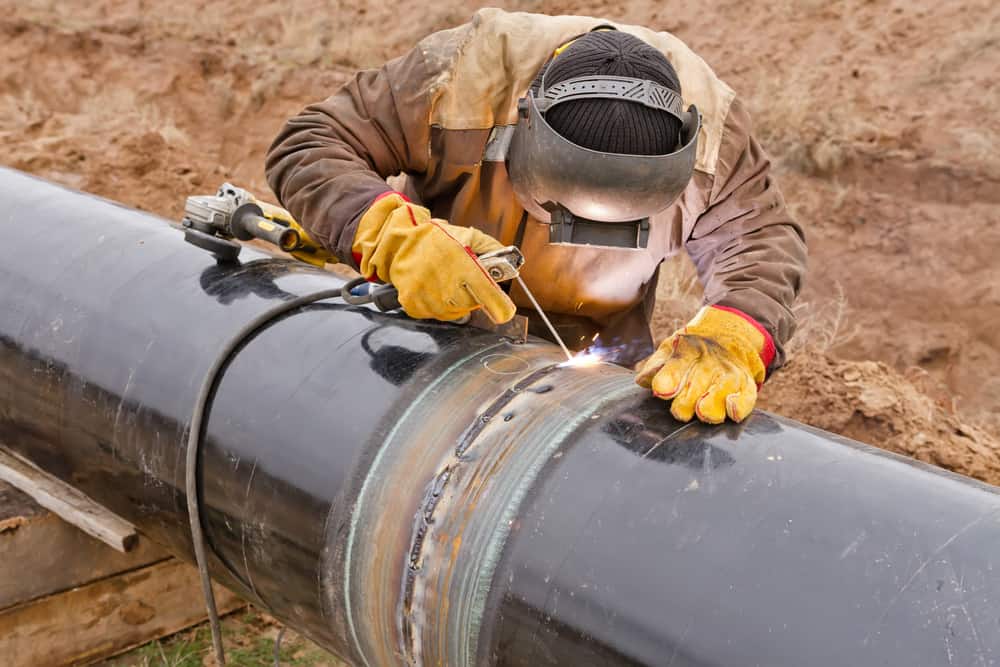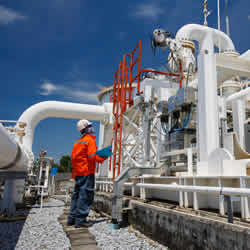Pipeline Welding Inspection: Cutting-Edge Techniques for Accurate Assessments
Wiki Article

Ideal Practices for Pipe Welding Examination: Methods, Specifications, and Treatments to Accomplish Quality Control and Compliance
Effective pipe welding assessment is vital for ensuring the stability and safety of vital facilities. Comprehending the intricacies included in each phase of evaluation is important to accomplishing conformity and dependability in pipe systems.Importance of Welding Inspection
The integrity of welded joints is extremely important in ensuring the safety and security and reliability of pipe systems. Correct welding techniques and complete assessment processes are essential to prevent failings that can lead to tragic occurrences, environmental damage, and loss of life. Pipeline Welding Inspection. Welding inspection works as a preventative measure, recognizing issues such as splits, porosity, and insufficient fusion prior to they intensify right into serious problemsAdditionally, pipe systems usually run under high pressure and extreme problems, making the high quality of welds much more crucial. Regulative conformity is an additional substantial aspect, as different criteria determine the top quality guarantee procedures that need to be abided by in pipeline building and construction and upkeep. Failing to conform can result in financial losses and lawful implications.

The role of welding inspection prolongs beyond mere confirmation of workmanship; it encompasses the guarantee of long-lasting operational stability. This entails an organized technique that includes not just aesthetic inspections yet likewise progressed non-destructive testing approaches. Inevitably, reliable welding examination is a financial investment in the durability and safety of pipe systems, guaranteeing they function as meant while lessening risks related to material shortages.
Key Inspection Techniques

Aesthetic examination, commonly the initial line of defense, permits the recognition of surface area problems such as fractures, undercuts, and porosity. Ultrasonic testing employs high-frequency acoustic waves to discover inner imperfections, providing a detailed evaluation of weld honesty. This non-destructive method is especially reliable for determining interruptions that might not show up externally.
Radiographic testing includes using X-rays or gamma rays to create pictures of the welded joint, disclosing interior issues. This strategy gives in-depth understandings yet may call for specific tools and safety factors to consider. Lastly, magnetic bit screening is reliable for spotting surface and near-surface discontinuities in ferromagnetic materials, using electromagnetic fields and great iron fragments.
Market Requirements and Laws
Conformity with industry standards and guidelines is essential for making certain the high quality and safety and security of pipeline welding assessments. These requirements give a structure for best techniques in welding processes, products, and inspection strategies, permitting organizations to lessen issues and improve the stability of pipe systems. Secret bodies such as the American Society of Mechanical Engineers (ASME), the American Welding Society (AWS), and the International Organization for Standardization (ISO) state guidelines that are widely identified and adopted within the industry.
In the United States, regulations from the Pipe and Hazardous Products Safety Management (PHMSA) control the security of pipe procedures, mandating strenuous evaluation protocols. These requirements not only offer to safeguard public security and the setting yet likewise make certain compliance with contractual and legal commitments. Adherence to you can try here the relevant codes, such as ASME B31.3 for procedure piping, is necessary for maintaining functional efficiency and regulative conformity.
In addition, continuous updates and revisions to these criteria reflect technical advancements and developing market practices, emphasizing the demand for organizations to remain informed and train workers appropriately. Ultimately, durable compliance with well established requirements fosters depend on and dependability in pipeline facilities, guarding both assets and stakeholders.
Effective Evaluation Procedures
Effective evaluation procedures are critical for identifying possible problems in pipe welds and making certain the total honesty of the system. A my company methodical strategy to assessment includes several key phases, consisting of pre-weld, in-process, and post-weld assessments. Each phase plays an important duty in maintaining quality control.During pre-weld inspection, it is necessary to examine the materials and joint setups, making sure compliance with job specifications. In-process examinations include monitoring welding techniques and specifications, such as warm input and travel speed, to avoid problems from happening. This stage permits real-time modifications to welding methods.
Post-weld evaluations include non-destructive testing (NDT) methods like radiography, ultrasonic testing, and magnetic bit screening. These techniques assist spot inner and surface defects that can compromise the pipeline's performance. Paperwork of all inspection tasks is vital, supplying a traceable document that sustains conformity with market standards.
Educating and accreditation of inspection workers further boost the effectiveness of these procedures. By adhering to an organized evaluation protocol, companies can reduce dangers, make certain conformity, and inevitably deliver pipelines that fulfill rigid safety and security and efficiency requirements.
Usual Challenges and Solutions
Pipeline welding assessment presents several typical obstacles that can influence the top quality and security of the end product. One considerable challenge is the irregularity in welding techniques and products, which can bring about inconsistent weld high quality. To address this, it is essential to establish standard treatments see this and training for welders, guaranteeing a consistent method across tasks.
Environmental factors, including temperature level and moisture, can likewise affect the welding procedure, potentially causing cracks or incomplete fusion. Executing controlled environments and sticking to pre-weld procedures can minimize these threats.
Final Thought
To conclude, the implementation of ideal techniques for pipeline welding evaluation is essential for making sure quality control and conformity with industry criteria. A detailed technique, including numerous techniques such as aesthetic, ultrasonic, and radiographic testing, facilitates the identification of defects throughout all stages of the welding procedure. Pipeline Welding Inspection. Adherence to developed guidelines and effective inspection treatments not only boosts the reliability and safety of pipeline systems but likewise reduces threats related to welding defects, thereby advertising general functional integrityConformity with industry requirements and regulations is crucial for making sure the high quality and security of pipeline welding assessments. These requirements supply a structure for finest practices in welding processes, materials, and examination strategies, allowing companies to reduce flaws and enhance the honesty of pipeline systems.In the United States, guidelines from the Pipeline and Hazardous Materials Safety And Security Administration (PHMSA) govern the safety and security of pipeline operations, mandating extensive evaluation protocols. A methodical method to evaluation encompasses a number of key stages, including pre-weld, in-process, and post-weld evaluations.In conclusion, the application of ideal methods for pipe welding assessment is important for making sure top quality guarantee and conformity with market standards.
Report this wiki page